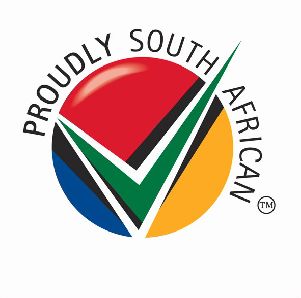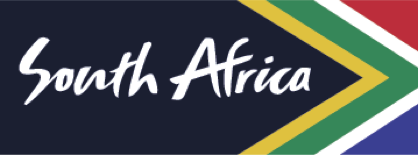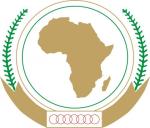Brand South Africa: A Public Diplomacy Case Study
by Alex Laverty
19 Nov 2010
In 2010, Brand South Africa sought to increase familiarity and knowledge of South Africa as a viable business and tourism destination through advertising campaigns, broadcasts, print and online media, using the FIFA 2010 World Cup as an amplifier.
Background:
In May 2004, the Fédération Internationale de Football Association awarded its quadrennial tournament, the FIFA World Cup, to South Africa, which marked the first time the event would be hosted by an African country. In the build up to the event, world media casted doubts on South Africa’s ability to host a successful World Cup. On numerous occasions, FIFA was questioned about a back-up host site if South Africa failed to complete new stadiums on schedule. Also, South Africa’s crime rates were often cited as a potential danger for visitors, with one company, Protektor Vest, famously marketing body armour vests with the flag of your choice on the armour.
Labour strikes and skyrocketing construction costs, plus the flagging world economy led to predictions of a dire tournament at an unreasonable cost to South Africa citizens, many who lacked basic facilities in their homes and suffered flagging service delivery. A country that also had pressing needs in public sector areas such as education and energy production was criticized internally for spending what eventually became nearly R40 Billion on stadiums, infrastructure, and transportation links. In addition, the failed promise to build upon the momentum of the 1994 multi-racial election has seen the GINI co-efficient increase and race barriers replaced by socio-economic divides that continue to spark political and economic conflict in the Rainbow Nation. With these being the predominant themes emanating from South Africa in the build up to the FIFA World Cup, Brand South Africa sought to reframe the country in a positive light.
Public Diplomacy Program:
Brand South Africa launched their 2010 campaign with four different ‘Activation’ Ideas: Football Fridays, Fly the Flag for Football, the Diski Dance, and Our National Anthem. These were launched over a year in advance of the FIFA World Cup with the goal being to rally support among the local population, and present South African sporting culture to arriving visitors. It was believed that by exciting the local population the social and racial fissures visible in South African society would be covered up and the excitement of South Africans would allow foreign visitors the best experience in terms of hospitality and sporting experience. By shielding these issues, it was hoped that the crime that had caused international visitors pause about visiting would be suppressed by the national pride expressed by the majority of the population. Unique aspects of South African football culture were promoted, including the vuvuzela, a plastic horn descendent from the kudu horn, and the makarapa, a colorfully decorated modified miner’s helmet.
Football Fridays were based on the Casual Friday business practice in the United States, and were begun in an effort to get South African businesses excited and supportive of the coming tournament. Brand South Africa said it would “provide the inspiration to become phenomenal hosts for the world’s biggest soccer tournament”. Employees of both public and private sectors were encouraged to wear the green and yellow of the South African football team.
The second idea was Fly the Flag for Football. Using the internationally recognizable South African flag, one that is considered a unity symbol inside the nation, Brand South Africa hoped to capitalize on these associations by encouraging organizations, businesses, and individuals to fly the South African flag prominently at their homes, offices, and on their vehicles. This was assisted through the retail sector, which sold just about every item imaginable with the iconic Green, Gold, White, Red, Blue, and Black of the South African flag. The most well-known aspect of Fly the Flag were car socks, flags made of polyester with an elastic string that covered a vehicle’s mirrors, which adorned most of the local cars during the tournament.
Seeking to transmit the flavour of an African World Cup through social media, a campaign promoting the Diski Dance swept YouTube as well as local media. South Africans were encouraged to learn the dance, a series of basic football moves nusing some of the 11 national languages to denote skills such as ‘The Juggle’, “Header”, and “Table Mountain” (mimicking the balancing of a soccer ball behind one’s neck while bending over). It was promoted as a way to feel the rhythm of African football and a way for South Africans to welcome the visitors.
The national anthem of South Africa, a combination of Nkosi Sikelel’ and of Die Stem, one a theme of Black South Africa and one a bastion of Afrikanerdom pre-1994, the anthem has become a symbol of national unity promoted famously at the IRB Rugby World Cup 1995 by the predominantly white Springboks, South Africa’s national rugby team. In recent years, Bafana Bafana, the national soccer team of South Africa (predominantly black), has been criticized for the lack of passion the players show during the rendition of the anthem at matches. Additionally, a distinct drop in noise level occurs at soccer matches when the anthem shifted from Nkosi Sikelel’ (made up of Xhosa and Zulu) to the second half of the anthem (sung in Afrikaans and English). The opposite would occur at Rugby matches. Thus Brand South Africa promoted the playing of the anthem at offices and schools so that when the opening game of the FIFA World Cup kicked off, there would be a rousing rendition to broadcast to the world of Nkosi Sikelel’ iAfrika.
Both Fly the Flag and the Diski Dance had their own websites, while the entire strategy was promoted via media kits, tool kits to businesses, and television advertising. All of this was sufficiently publicized in advance of the FIFA World Cup so that by the time international visitors arrived, this aura of unity, national pride, and football passion would be at its climax.
Analysis:
Brand South Africa set out to tackle many difficult stereotypes and media depictions of South Africa in the months leading up to and during the FIFA World Cup. It purposely sought to rebrand the country in a positive light with hopes of encouraging future tourism and foreign investment through the creation of a friendly and safe environment by promoting national symbols as a way of controlling the amount of attention given to the crime and poverty during the worldwide focus on the country during the months of June and July 2010. Through the use of unity icons, Brand South Africa was able to create a passionate and welcoming host population for the largest event ever hosted on the African continent. This view of South Africa that many visitors took home from the tournament is already paying dividends with Reputation International finding a significant rise in perception of South Africa in the G8 countries post-World Cup as measured against their rating in early 2010. Real world affects can be seen in South Africa gaining a seat in the most recent UN vote for members of the Security Council. Additionally, the majority of international media outlets reported positively on South Africa’s event planning abilities and on the hospitality and warmth that their South African hosts extended to them during the month of the tournament. This has tackled many of the paternalistic and pessimistic (and possibly racist) views that were espoused in the lead up to an African hosting of the FIFA World Cup.
Point of Emphasis for Evaluation:
Investing in a sporting event on the scale and the size of the FIFA World Cup allowed South Africa to promote the country’s passion for the game of football and show the country as a welcoming host to the world. World media then broadcast these images and stories around the world, which had positive effects on world perceptions of South Africa and has at least in the short term boosted the country’s soft power.
Click here for my further research on Brand South Africa
Sources:
PD Strategy Background
http://www.brandsouthafrica.com/
http://www.southafrica.info/2010/vuvuzela.htm
http://www.southafrica.info/2010/makarapa.htm
http://www.sagoodnews.co.za/2010_world_cup/brand_sa_unveils_2010_campaign.html
http://www.southafrica.info/2010/brandingsa2010.htm ***
http://www.mediaclubsouthafrica.com/images/stories/may2009/IMC%20release%20-%2011%20May%202009.pdf
Fly the Flag Campaign
http://www.flytheflagfridays.co.za/
http://www.sa2010.gov.za/node/2101
http://www.sa2010.gov.za/get-involved
http://www.southafrica.info/2010/flytheflagforfootball.htm
http://www.brandsouthafrica.com/news/471-fly-the-flag-fridays-launched.html
Fly the Flag Toolkit:
http://www.brandsouthafrica.com/media/football_toolkit/Presentation4web.swf
Brand SA Background
http://www.flytheflagfridays.co.za/legacy
http://www.southafrica.info/2010/footballfridays.htm
http://www.brandsouthafrica.com/marketing-materials.html
Body armor
Doubts
Effects of the World Cup
http://news.bbc.co.uk/2/hi/8718696.stm (funding and legacy)
http://www.ibtimes.com/articles/28748/20100615/south-africa.htm
http://blogs.hbr.org/cs/2010/06/is_the_world_cup_good_for_south_africa.html (gini coefficient)
http://www.southafrica.info/2010/coverage.htm
http://allafrica.com/stories/201007060854.html
Costs:
http://www.bwint.org/default.asp?index=2351&Language=en
Post World Cup Legacy
http://www.southafrica.info/2010/fifa-surveys.htm
http://www.brandchannel.com/features_effect.asp?pf_id=508
http://allafrica.com/stories/201005040421.html
http://www.brandsouthafrica.com/press-room/464-from-football-fridays-to-fly-the-flag-fridays-.html
http://www.southafrica.info/2010/legacy-programme.htm
http://www.southafrica.info/2010/2010-faq.htm **
http://www.brandsouthafrica.com/press-room/492-put-your-soul-into-building-the-sa-legacy.html
http://www.brandsouthafrica.com/news/511-heritage-month.html
http://www.mg.co.za/article/2010-07-10-we-did-it-showed-the-world
http://www.southafrica.info/2010/legacy-campaign.htm
World Cup Branding
http://www.bizcommunity.com/Article/196/147/49995.html
http://www.project2010.co.za/default.asp
Evaluation:
http://www.busrep.co.za/index.php?fSectionId=552&fArticleId=5688764
http://www.mg.co.za/article/2010-10-13-world-cup-boosts-sas-reputation
Evaluation Reports:
http://www.reputationinstitute.com/events/SA_2010_Country_Reputation_Press_Release.pdf




